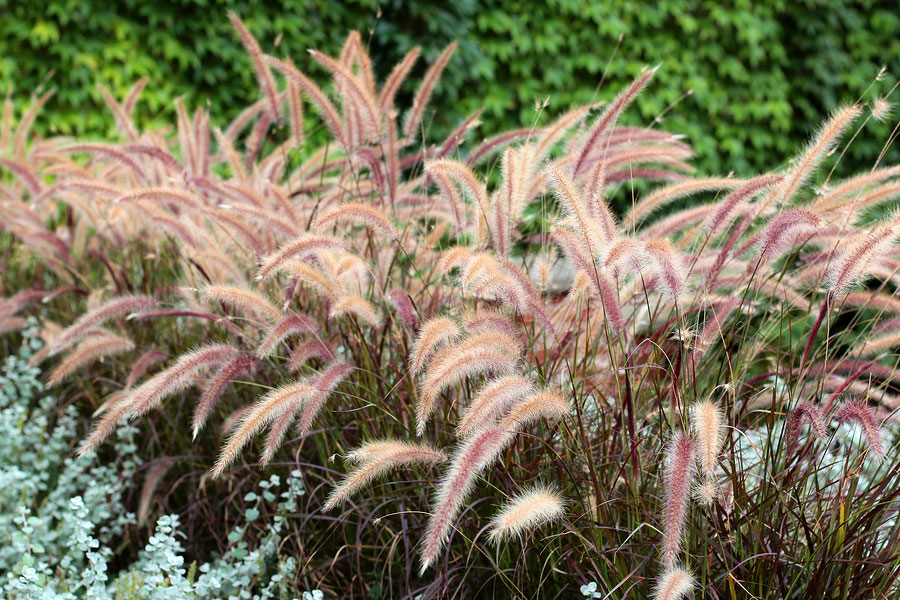Ornamental grasses are an easy and eco-friendly way to bring some texture, color, and interest to your landscaping. These plants are hardy and easy to care for, often found in a wide range of native species which makes them the natural choice for your yard, garden, or greenspace.
Plant ornamental grasses to enhance your garden’s beauty year-round; keep these tips in mind:
- Ornamental grasses are colorful, often adding blues, purples, reds, and golds to the landscape. In the fall, expect autumnal colors before the neutral tan of winter months. Choose grasses with variegated leaves for an intricate look in beds and borders.
- Most native species of ornamental grass are drought-resistant, perfect for this area of the US. These are found naturally in sunny and dry spots, so they require little attention to thrive.
- The natural movement of grasses in your gardens and beds brings a whole new element to your landscape. It creates a feature that is relaxing and serene.
- Grasses grow quickly and evolve in their appearance, which makes for a different landscape each season.
- Try planting ornamental grasses instead of hedges or shrubs for borders or use them in beds and borders. Consider using them as a striking feature in containers and potted plants, too.
- When planting a large amount of ornamental grass, you can control erosion on hilly terrain or rocky soil.
- Most ornamental grasses prefer soil with good drainage and full-sun. Once they are established and mature, they can do well in sub-par conditions. For this reason, ornamental grasses thrive in raised beds.
- Trim and cut your ornamental grass in early spring or late winter. As the color is the most muted during winter months, this could be the best time to prune and trim-back your grasses.
- Trim grass to several inches above the ground for optimal curb appeal. Don’t cut them too short or you risk them being burnt or damaged by the Lowcountry sun.
- Grasses often feature seed heads that are a popular food source for much local wildlife, including songbirds and beneficial insects, like bees. The grass also provides cover and camouflage for other wildlife, so planting native species is something that helps out the eco-system.
Talk to a landscape professional to determine the best native species to consider for your distinct property and greenspaces. For instance, sea oats are a hardy grass found throughout the Carolinas. This particular native species does well on the coast as it is salt-tolerant.
Want to learn more about adding ornamental grasses to your property? Talk to the experts in Charleston at Natural Tendencies Landscape Professionals. Their experience in low-country landscapes will benefit you when implementing native species into your yard, garden, and greenspace.

